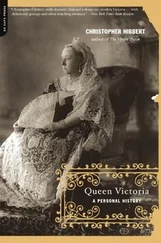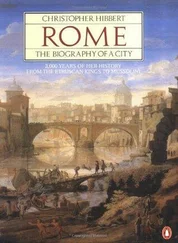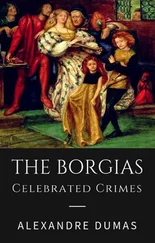At Santa Maria Maggiore they worshipped at the manger that had once been Christ’s own crib in the stable at Bethlehem; at San Giovanni in Laterano they marvelled at the swaddling clothes that had wrapped the baby Jesus and the table where he and his apostles had eaten their Last Supper; here, too, they could climb the stairs of Pontius Pilate’s house in Jerusalem, following, on their knees, in the footsteps of Christ himself. At St Peter’s they could see the lance that had pierced Christ’s body during the Crucifixion, a much-treasured relic that the basilica had acquired as recently as 1492, though Burchard recorded that several cardinals had noted that the same lance could also be seen in both Paris and Nuremberg.
Rome was, indubitably, the city where St Peter and St Paul had preached and died for their faith; the great basilicas of St Peter’s and San Paolo fuori le Mura marked their graves. And the heads of these great leaders of the early Church could be seen by the pilgrims, at certain hours, in a chapel in San Giovanni in Laterano; as one pilgrim noted with awe, they ‘still have their flesh, colour and beards as if they were still alive.’
The faithful, however, also provided easy pickings for the pickpockets and cutpurses who roamed the city streets. Burchard reported that on April 10, 1500, six men were hung on the gallows for the crime of robbing pilgrims. On May 27, the eve of the Feast of the Ascension, eighteen more were hung on the Ponte Sant’Angelo, where they would have been hideously visible to all those crossing the Tiber on their way to St Peter’s to walk through the Holy Door before saying their prayers in the venerated basilica and leaving their offerings in the casks provided. The first to be hung was a doctor from the hospital at San Giovanni in Laterano, who had been in the habit of leaving his wards each morning, armed with a crossbow, to kill and rob anyone he found; among the others were a band of highwaymen who had attacked a group of travellers in the hills outside Viterbo.
During the spring, news arrived in Rome that must have done much to lift the spirits of the pope and his son. On April 10 Louis XII had celebrated a great victory over Ludovico Sforza at Novara, after the Swiss mercenaries fighting for Ludovico refused to use their arms against the French. Landucci reported that twelve thousand were dead. Ludovico himself had been captured and taken to France; the fate of Cardinal Ascanio Sforza remained obscure, but early on the morning of Maundy Thursday, April 16, a courier arrived in Rome with the news that he had been found in a castle near Piacenza, where he had fled with six hundred horsemen and valuables worth 200,000 ducats. He, too, was now a prisoner, and the pope, according to Burchard, was so pleased with the news that he tipped the courier 100 ducats.
Far from offering help, or even support, to his erstwhile friend in this hour of need, Alexander VI took the opportunity to seize Ascanio’s valuable collection of artworks and jewels, including a set of twelve silver-gilt statues of the apostles; it took four hours for the carts, operating in secret under the cover of darkness, to transport the goods from the cardinal’s palace to the Vatican.
Meanwhile, Cesare was beginning to enjoy his enforced rest from the battlefield; and while his wife Charlotte d’Albret, who had given birth to his daughter, remained in France, Cesare spent much of his time with his mistress, an extremely pretty and entertaining young woman, Fiammetta de’ Michelis, whose accomplishments and complaisance as a cortigiana had enabled her to buy three houses in Rome as well as a country house outside the city walls. Cultivated as well as desirable, she spoke Latin, knew pages of Ovid and Petrarch by heart, sang well, and played the lyre; her handsome lover was often to be seen on his way to and from her house near the Piazza Navona.
Lucrezia, however, was less happy, her enjoyment of the warmth of early summer marred by increasing friction between her husband, Alfonso of Aragon, and her father and brother, whose alliance with France was proving a problem for both Alfonso and his sister Sancia. When the news spread around Rome that a Burgundian had challenged a Frenchman to a duel, to settle an argument over a banner, Cesare tried, unsuccessfully, to bribe the Burgundian to withdraw: ‘He would prefer,’ so the rumour went, ‘to have lost 20,000 ducats rather than see a Frenchman beaten.’ Sancia, on the other hand, made a point of dressing her own squires in the Burgundian colours, to show where her loyalties lay.
Cesare was careful not to publicly display any sign of the growing friction between himself and his brother-in-law. When the two men were seen together, they appeared to be on perfectly amicable terms, riding about the city in evident amity. Yet there was noticed in Cesare’s manner a more than usual impatience, ‘as though he were anxious for important actions to unfold.’
Cesare also appeared in public during this summer of 1500 honing his skills as a bullfighter. On June 24, the Feast of St John the Baptist, he demonstrated his prowess with the sword in the piazza of St Peter’s, which had been cordoned off to prevent the bulls from escaping. On another occasion, so the Venetian envoy Paolo Capello reported, he killed ‘seven bulls, fighting on horseback in the Spanish style and cutting off the head of one of them with his first stroke, a feat which seemed great to all Rome.’
On June 29, shortly before sunset, the pope himself was lucky to escape with his life thanks to an act not of man, but of God. During an exceptionally violent storm, with ‘hailstones the size of broad beans and an extremely violent wind,’ reported Burchard, a chimney in the Vatican collapsed, breaking two beams in an upper chamber that brought down the ceiling of the room below, where Alexander VI was in discussion with a cardinal and one of his private secretaries. The two men were just closing the windows, as the pope had asked them to do, when they heard the thunderous crash and turned immediately to find the papal throne hidden under a pile of rubble: ‘They cried to the guards, ‘The Pope is dead! The Pope is dead!’ and the news quickly spread throughout the city.’ Alexander VI, however, was only unconscious; when they removed the plaster and bricks, they found him seated on his throne, with two small cuts to the head, two larger ones on his right hand, and another on his right arm, miraculously still alive. As one chronicler observed, this lucky escape ‘was seen as a great sign and omen for the Pope.’
Some two weeks later, on the evening of July 15, 1500, Alfonso of Aragon went to the Vatican to dine with the pope; after what seems to have been a pleasant evening, he took his leave of his fellow guests to walk the short distance home to the palace of Santa Maria in Portico just across the piazza of St Peter’s, accompanied by a gentleman of his household, Tomaso Albanese, and a groom. As they passed by the basilica, a number of men, apparently sleeping on the flight of great ceremonial steps, roused from their ‘slumbers,’ rose to their feet, and suddenly fell upon Alfonso, stabbing him with their daggers. They would have carried him off to their tethered horses had not his companions rushed to his aid and dragged him away to the safety of the Vatican.
Inside the palace, Lucrezia fainted at the sight of her wounded husband. By the light of the tapers and candles, it was soon clear to all that Alfonso’s injuries were serious; he had deep gashes to his head and his shoulder, ‘either one of which could prove mortal,’ as the Florentine ambassador reported. The Pope had him taken to one of his own rooms in the Borgia apartments, where his wounds were dressed. He recovered slowly, under the watchful eye of a doctor sent to him by the king of Naples and the careful nursing of Lucrezia and Sancia, his room guarded by soldiers and his food prepared by his loving wife, fearful of another attempt on his life.
Читать дальше











